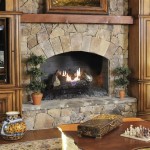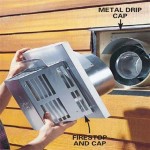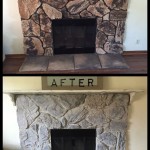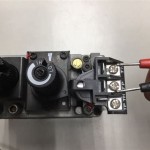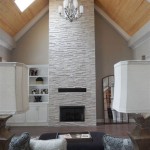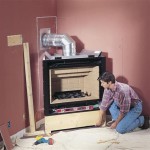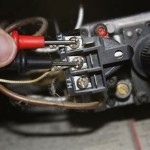Glass Cleaner For Gas Fireplace: Maintaining Optimal Clarity and Efficiency
A gas fireplace offers a convenient and aesthetically pleasing source of heat. However, the glass door that encloses the flames is prone to developing a hazy film over time. This film, composed of soot, mineral deposits, and combustion byproducts, can significantly diminish the visual appeal of the fireplace and potentially impact its efficiency. Selecting and utilizing the appropriate glass cleaner is crucial for maintaining the clarity and functionality of a gas fireplace.
Understanding the composition of the film is the first step in determining the right cleaning approach. This film is not merely dust; it's a baked-on residue created by the high temperatures and incomplete combustion associated with gas burning. While some might be tempted to use general-purpose glass cleaners, these products are often ineffective against the stubborn deposits found on fireplace glass. Moreover, they can contain chemicals that are harmful to the fireplace's components or release noxious fumes when heated.
Specialized gas fireplace glass cleaners are formulated specifically to dissolve and remove this type of residue without damaging the glass or the fireplace itself. These cleaners often contain solvents and mild abrasives that break down the grime effectively. It's important to note that not all glass cleaners are created equal, and selecting a product designed for gas fireplaces is paramount.
Identifying the Right Type of Glass Cleaner
The market offers a range of gas fireplace glass cleaners, each with its own formulation and application method. Understanding the different types available can help in making an informed decision.
Aerosol spray cleaners are a popular choice due to their ease of application. They typically contain solvents that quickly dissolve the film and can be wiped away with a clean cloth. However, aerosol sprays can sometimes be difficult to control, leading to overspray and potential waste. Furthermore, some aerosol products contain volatile organic compounds (VOCs) that can be harmful to the environment and indoor air quality.
Liquid spray cleaners offer a more controlled application. These cleaners are typically dispensed from a pump bottle, allowing for precise targeting of the affected areas. They often contain similar solvents as aerosol sprays but may also include detergents to help lift the grime. Liquid spray cleaners tend to be more environmentally friendly than aerosol products, as they typically contain fewer VOCs.
Gel cleaners are a thicker consistency, allowing them to cling to the glass surface for longer periods. This extended contact time can be particularly beneficial for heavily soiled glass. Gel cleaners often contain a combination of solvents, detergents, and mild abrasives. The gel consistency also minimizes the risk of drips and overspray.
Powdered cleaners typically require mixing with water to form a paste. This paste is then applied to the glass and allowed to sit for a specified period before being wiped away. Powdered cleaners often contain stronger abrasives than liquid or gel cleaners, making them effective for removing stubborn deposits. However, caution should be exercised when using powdered cleaners, as excessive scrubbing can scratch the glass surface.
Proper Cleaning Procedure for Gas Fireplace Glass
Regardless of the type of cleaner chosen, adhering to a proper cleaning procedure is essential for achieving optimal results and preventing damage to the fireplace. Before commencing the cleaning process, ensure that the fireplace is completely cool. Cleaning the glass while it's still hot can cause the cleaner to evaporate too quickly, reducing its effectiveness and potentially creating dangerous fumes.
Gather all the necessary supplies, including the chosen glass cleaner, a soft cloth or sponge, a scraper (if needed for stubborn deposits), and safety glasses. Always wear safety glasses to protect your eyes from splashes or splatters of cleaning solution.
Apply the glass cleaner according to the manufacturer's instructions. For aerosol or liquid sprays, spray the cleaner directly onto the glass surface, being careful to avoid overspray. For gel or paste cleaners, apply a thin, even layer to the glass. Allow the cleaner to sit for the recommended amount of time, typically a few minutes, to allow the solvents to dissolve the grime.
Using a soft cloth or sponge, gently wipe away the cleaner and the dissolved residue. For stubborn deposits, a non-abrasive scraper may be used to loosen the grime before wiping. Avoid using excessive force, as this can scratch the glass. If the glass is particularly dirty, it may be necessary to repeat the cleaning process.
Once the glass is clean, use a clean, dry cloth to buff the surface and remove any remaining streaks or residue. Ensure that all traces of the cleaner are removed before relighting the fireplace.
Preventative Measures for Maintaining Clean Glass
While regular cleaning is necessary to maintain the clarity of gas fireplace glass, several preventative measures can be taken to minimize the accumulation of film and extend the time between cleanings.
Ensuring proper ventilation is crucial. Inadequate ventilation can lead to incomplete combustion, resulting in increased soot production. Check the fireplace's ventilation system regularly to ensure that it is functioning correctly. Adjusting the air shutter on the burner may also help optimize combustion and reduce soot buildup. Consultation with a qualified technician is recommended when adjusting airflow.
Using the correct type of gas is another important factor. Using a gas with a high sulfur content can contribute to the formation of a stubborn, yellowish film on the glass. Using the type of gas recommended by the fireplace manufacturer is crucial.
Regularly inspecting and cleaning the burner assembly can also help prevent excessive soot production. A dirty or malfunctioning burner can lead to incomplete combustion and increased soot buildup. Follow the manufacturer's instructions for cleaning the burner assembly. It's often recommended that a qualified technician perform this task to ensure proper maintenance and safety.
By selecting the appropriate glass cleaner, following a proper cleaning procedure, and implementing preventative measures, gas fireplace owners can maintain the beauty and efficiency of their fireplaces for years to come.

Gas Fireplace Glass Cleaner Friendly Fires

Quick N Brite Fireplace Glass Cleaner Kit With Cloth And Sponge Removes Soot Smoke Creosote More 24 Oz 1 Pack Com

Imperial Kk0044 Gas Fireplace Glass Cleaner 8 Ounce Com
Poli Et Nettoyant à Vitre Pour Poêles Au Gaz 227 Ml Imperial Manufacturing Home Hardware

Rutland Rd 565 White Off Glass Ceramic Cleaning Cream 8 Fl Oz

Glass Fireplace Cleaner Blower

How To Clean Gas Fireplace Glass

Rutland Gas Fireplace Cleanup Kit With Log Soot Remover White Off Glass Cleaner Brick And Stove Bn02 The Home Depot

Rutland 32 Fl Oz Fireplace And Stove Glass Cleaner Spray Bottle For Soot Smoke Creosote Removal 82 The Home Depot

Gas Wood Stove Fireplace Glass Cleaner Gfc 8 Fl Oz Bottle Soot Remover
Related Posts

